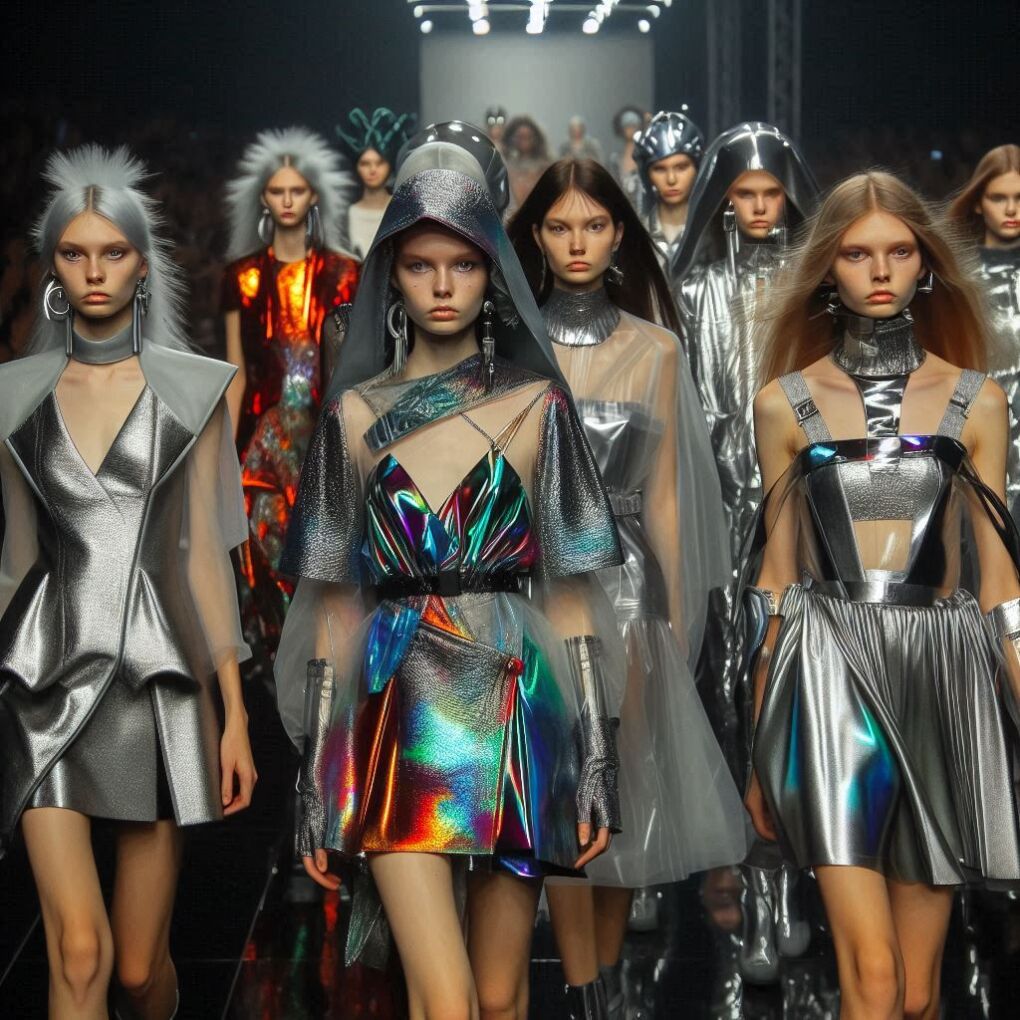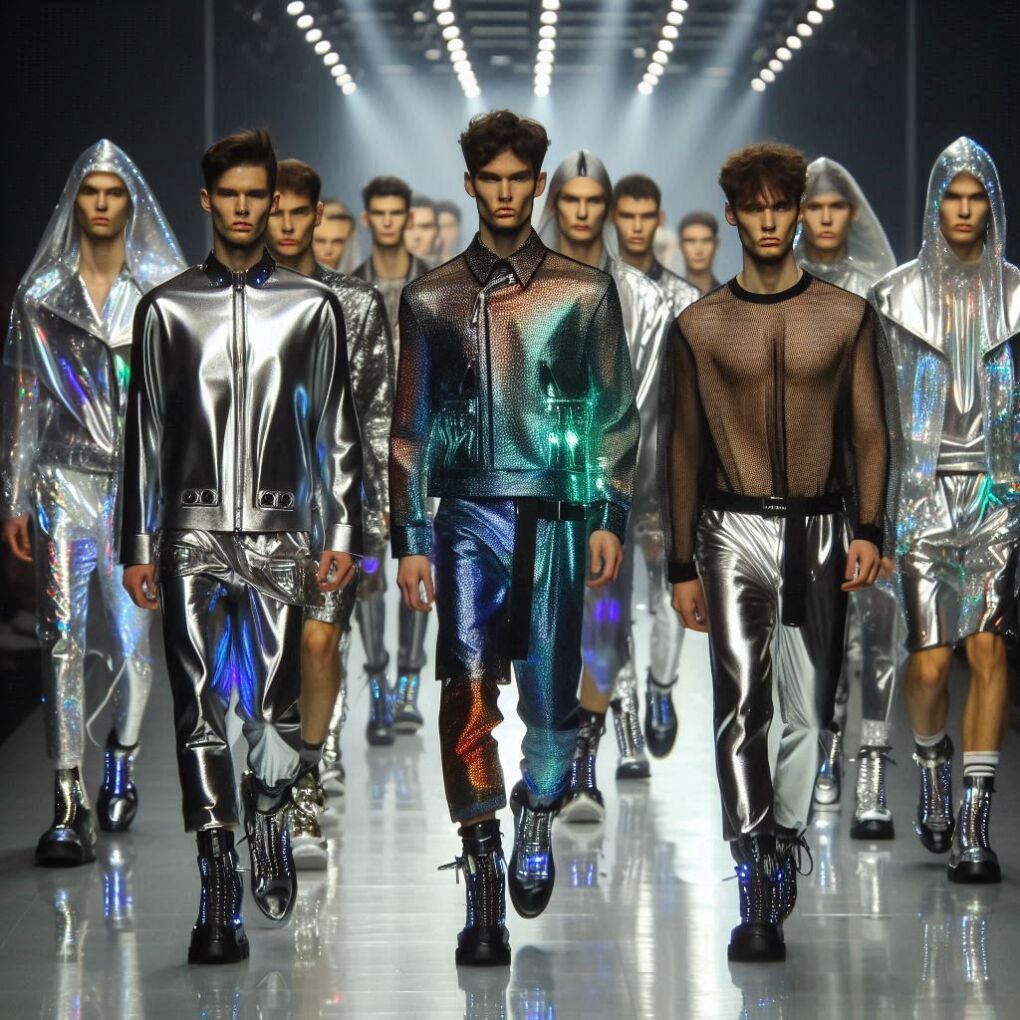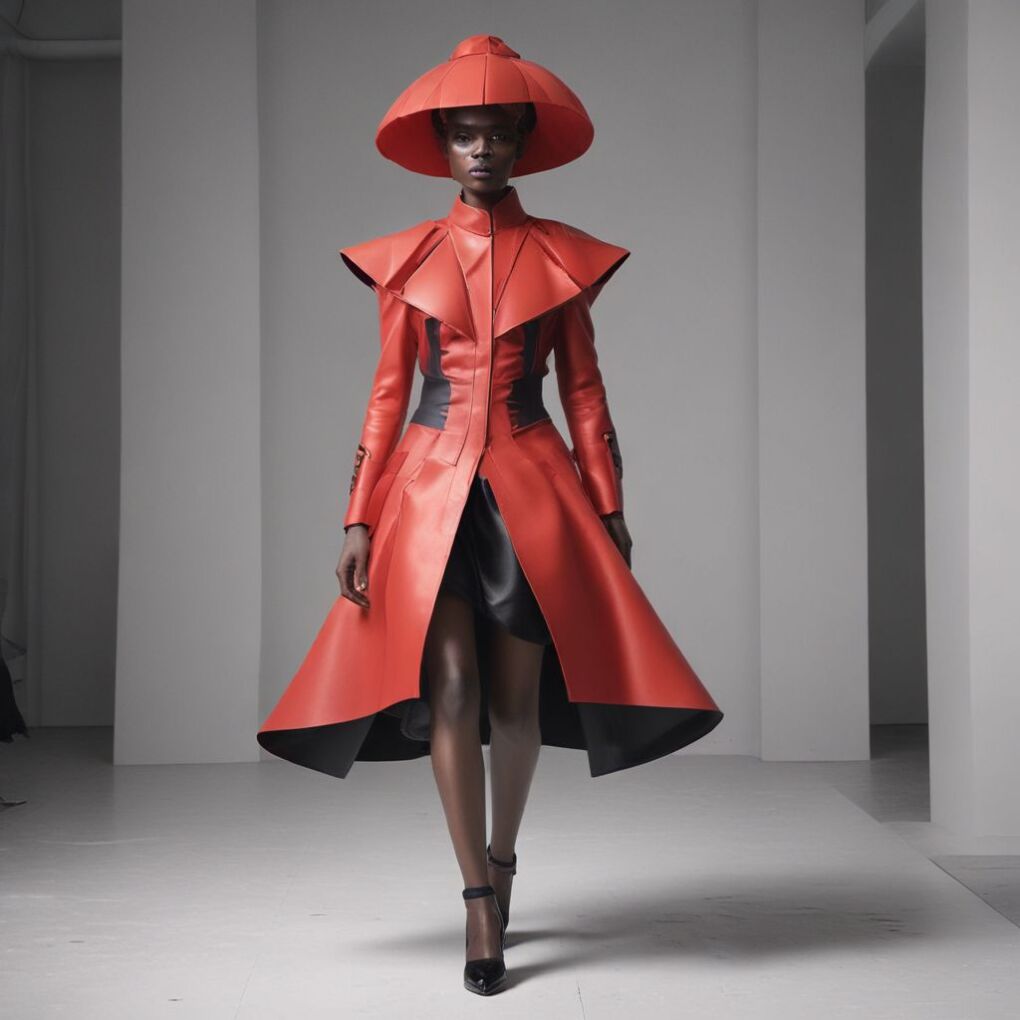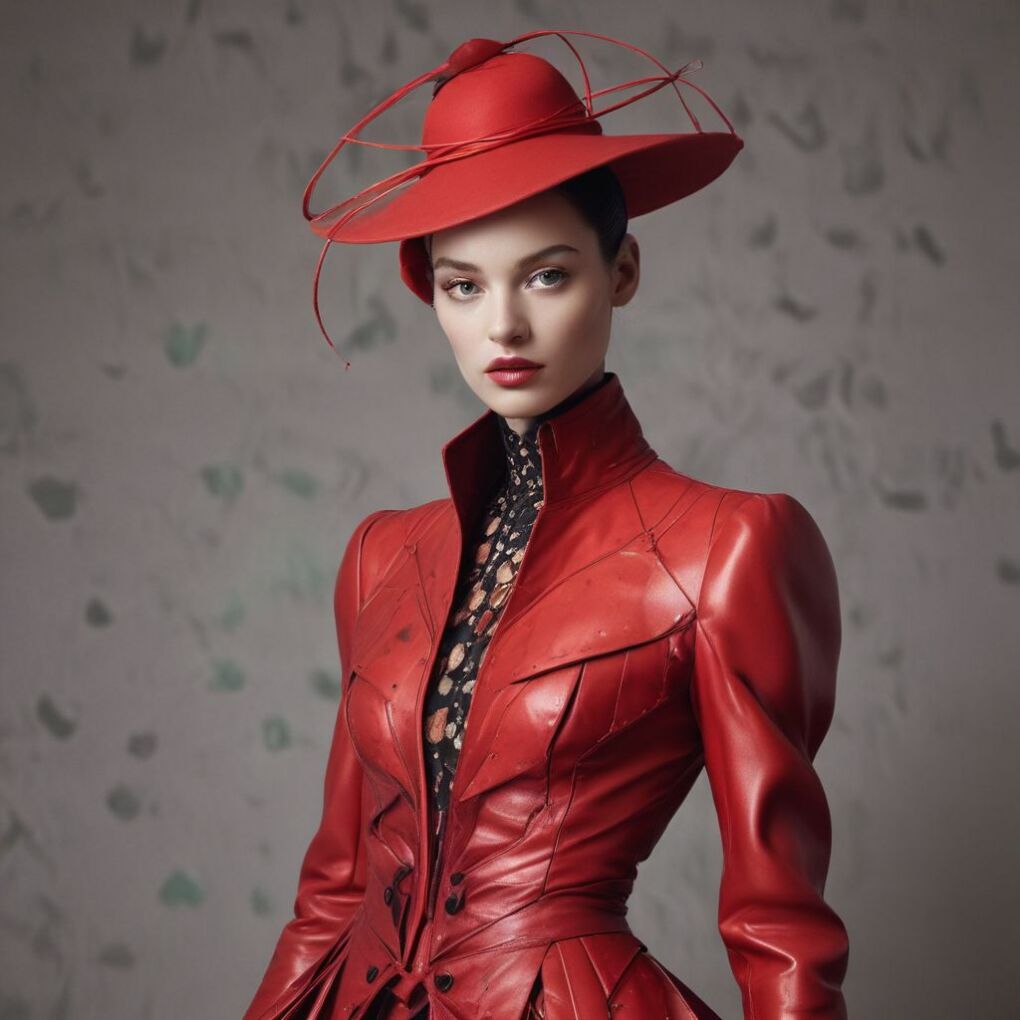In the ever-evolving realm of fashion, few concepts evoke as much intrigue and controversy as avant-garde style. This boundary-pushing movement defies conventional norms, challenging societal expectations with its audacious designs and thought-provoking statements. From the runways of Paris and Milan to the streets of metropolitan cities, avant-garde fashion has carved out a niche for itself, captivating fashion enthusiasts and critics alike.

What is Avant Garde Fashion?
Avant-garde fashion, derived from the French term “avant-garde,” which translates to “advance guard” or “vanguard,” refers to a style that is innovative, experimental, and unconventional. It pushes the boundaries of traditional fashion, often incorporating elements that are considered shocking, bizarre, or even anti-fashion.
This cutting-edge movement is characterized by its rejection of mainstream trends and its willingness to embrace the avant-garde, the unusual, and the unconventional. Avant-garde fashion designers are not afraid to challenge societal norms, using their creations as a medium to express their artistic visions and make powerful statements.
The Origins of Avant-Garde Fashion
The roots of avant-garde fashion can be traced back to the early 20th century, when artists and designers began to challenge traditional notions of beauty and aesthetics. Movements like Dadaism, Surrealism, and Futurism played a significant role in shaping the avant garde mindset, encouraging artists to experiment with unconventional materials, techniques, and concepts.
One of the pioneers of avant garde fashion was the legendary Elsa Schiaparelli, who collaborated with artists like Salvador Dalí and Jean Cocteau to create surreal and thought-provoking designs. Her iconic pieces, such as the Lobster Dress and the Shoe Hat, became emblems of the avant garde movement, blurring the lines between art and fashion.

The Influence of Avant Garde Fashion
Avant garde fashion has had a profound impact on the fashion industry, inspiring designers and pushing the boundaries of what is considered wearable art. Many of the trends and styles that we see today can trace their origins back to the avant garde movement.
For example, the deconstructed and asymmetrical designs popularized by avant garde designers like Rei Kawakubo of Comme des Garçons have influenced mainstream fashion, leading to the adoption of unconventional silhouettes and unconventional use of materials.
“Fashion is not something that exists in dresses only. Fashion is in the sky, in the street, fashion has to do with ideas, the way we live, what is happening.” – Coco Chanel
The Pioneers of Avant Garde Fashion
Throughout history, several designers have left an indelible mark on the world of avant-garde fashion, pushing the boundaries and challenging societal perceptions of what constitutes fashion. Here are some of the most influential pioneers of this movement:
- Elsa Schiaparelli: Known for her collaborations with artists like Salvador Dalí, Schiaparelli was a true trailblazer in the world of avant-garde fashion. Her iconic designs, such as the “Shoe Hat” and the “Lobster Dress,” were ahead of their time and challenged traditional notions of beauty and wearability.
- Rei Kawakubo (Comme des Garçons): Rei Kawakubo’s deconstructed and asymmetrical designs for Comme des Garçons have been a constant source of inspiration for the avant-garde movement. Her bold and unconventional approach to fashion has earned her a cult following and numerous accolades, including the prestigious Isamu Noguchi Award.
- Hussain Chalayan: Known for his innovative use of technology and materials, Hussain Chalayan’s avant-garde designs often blur the lines between fashion and performance art. His iconic “Transformer Dress” and “Remote Control Dress” have become iconic examples of avant-garde fashion’s ability to push boundaries and challenge traditional notions of clothing.
- Viktor & Rolf: The Dutch design duo Viktor & Rolf have been at the forefront of avant-garde fashion for decades, creating conceptual and thought-provoking collections that challenge traditional silhouettes and materials. Their iconic “Russian Doll” collection and “Wearable Art” pieces have cemented their place in the annals of avant-garde fashion history.

Avant Garde Fashion Designers and Brands
Many fashion designers and brands have embraced the avant garde aesthetic, pushing the boundaries of fashion and challenging societal norms. Here are some notable examples:
| Designer/Brand | Notable Contributions |
|---|---|
| Rei Kawakubo (Comme des Garçons) | Deconstructed and asymmetrical designs, unconventional silhouettes |
| Vivienne Westwood | Punk rock aesthetic, subversive designs |
| Alexander McQueen | Theatrical and conceptual fashion shows, shocking designs |
| Iris van Herpen | 3D-printed garments, innovative use of technology |
| Viktor & Rolf | Avant-garde couture, unconventional shapes and materials |
| Maison Margiela | Deconstructed and recycled fashion, anonymity of the designer |
The Impact of Avant Garde Fashion
Avant garde fashion has had a significant impact on various aspects of the fashion industry and society as a whole. Here are some notable effects:
- Pushing Creative Boundaries: Avant garde fashion encourages designers to think outside the box, exploring new materials, techniques, and concepts. This constant experimentation and innovation push the boundaries of what is considered fashion, inspiring and influencing the industry as a whole.
- Social and Political Statements: Many avant garde designers use their creations as a platform to make powerful statements about social, political, and environmental issues. Their designs often challenge societal norms and encourage critical thinking about important topics.
- Sustainability and Ethical Practices: Some avant garde designers have embraced sustainable and ethical practices, using unconventional materials and techniques to create fashion that is environmentally friendly and socially responsible.
- Influencing Mainstream Fashion: While avant garde fashion may seem extreme or impractical to some, its influence on mainstream fashion cannot be denied. Many trends and styles that were once considered avant garde have been adopted and adapted by mainstream fashion brands.
- Artistic Expression: Avant garde fashion is often seen as a form of wearable art, allowing designers to express their artistic visions and push the boundaries of what is considered art.

Controversial and Thought-Provoking Designs
Avant garde fashion is no stranger to controversy, with many designers creating pieces that challenge societal norms and spark debates. Here are some notable examples of controversial and thought-provoking avant garde designs:
- Alexander McQueen’s “Highland Rape” collection (1995) – This controversial collection explored the violence and oppression faced by Scotland during the 18th century.
- Comme des Garçons’ “Body Meets Dress, Dress Meets Body” collection (1997) – This collection featured lumpy and misshapen garments, challenging traditional notions of beauty and femininity.
- Viktor & Rolf’s “Bedroom Slippers” collection (2005) – This collection featured exaggerated and oversized slippers, commenting on the disconnect between fashion and function.
- Iris van Herpen’s “Wilderness Embodied” collection (2013) – This collection featured 3D-printed garments inspired by the natural world, blurring the lines between fashion and technology.
Quotes from Avant Garde Fashion Icons
“I want to make clothes that matter, that have something to say about the world we live in.” – Vivienne Westwood
“I want my clothes to suggest ideas, to make people think.” – Rei Kawakubo
“Fashion should be a form of escapism, and not a form of imprisonment.” – Alexander McQueen
“I don’t want to be a designer, I want to be a thinker.” – Miuccia Prada
“Fashion is not something that exists in dresses only. Fashion is in the sky, in the street, fashion has to do with ideas, the way we live, what is happening.” – Coco Chanel
The Future of Avant Garde Fashion
As society continues to evolve and new technologies emerge, the boundaries of avant garde fashion will undoubtedly be pushed even further. With the increasing focus on sustainability and ethical practices, we can expect to see more avant garde designers exploring unconventional materials and techniques that are environmentally friendly and socially responsible.
Additionally, the integration of technology into fashion will likely play a significant role in shaping the future of avant garde design. We may see more designers experimenting with 3D printing, augmented reality, and other cutting-edge technologies to create truly innovative and thought-provoking garments.
Regardless of the direction it takes, one thing is certain: avant garde fashion will continue to challenge societal norms, push creative boundaries, and inspire passionate debates among fashion enthusiasts and critics alike.
Conclusion
In conclusion, avant garde fashion is a daring and provocative movement that has left an indelible mark on the fashion industry. While it may not be for the faint of heart, its ability to inspire, challenge, and spark conversations about important societal issues is undeniable. As the world continues to evolve, we can expect avant garde fashion to remain at the forefront of creative expression, pushing the boundaries of what is considered art and fashion.
